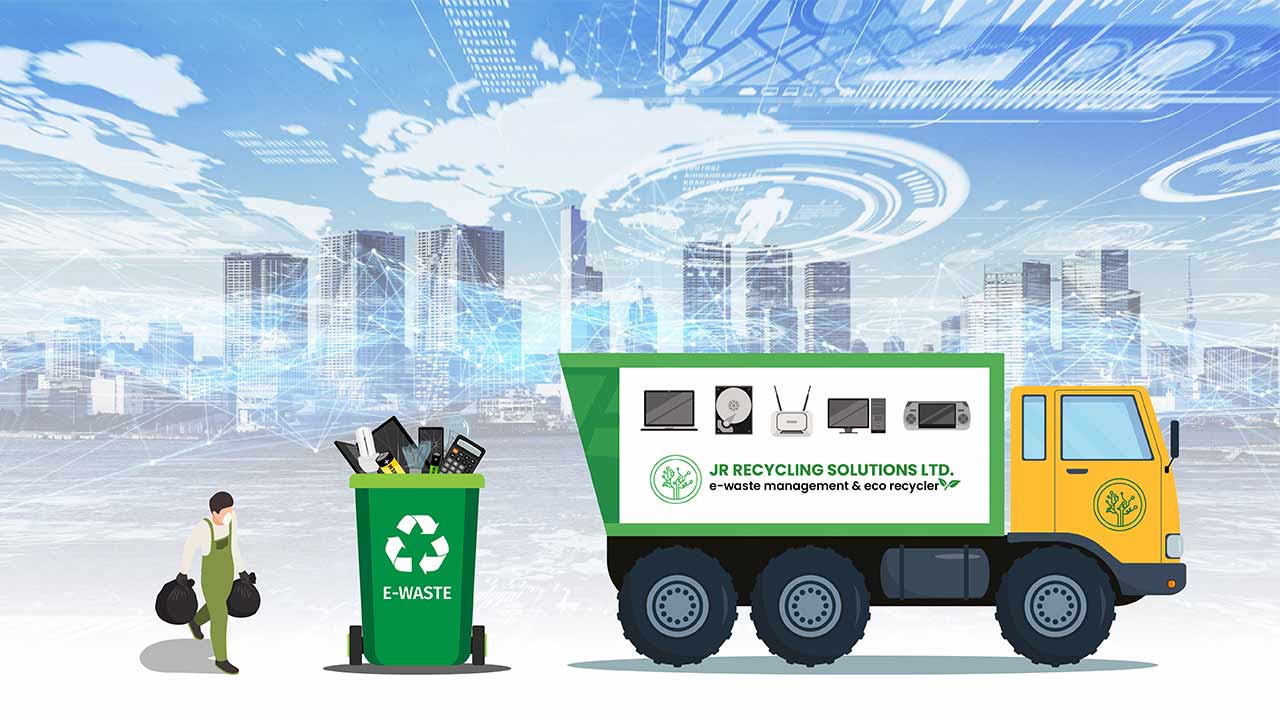Electronic waste, or e-waste, is becoming an increasingly pressing issue in our planet’s sustainable future. It is made up of materials such as metals, plastics, and glass, coming from electronic products and components that have been discarded. Recycling electronics can help reduce the amount of waste that ends up in landfills and give the materials a valuable second chance.
All the e-waste must be recycled to build a better and safe world. The recycling process benefits not only the world but also everyone involved in it, starting from those who are the ones generating the e-waste to those who are recycling them. The process is very organized and secure. It can be explained in simple steps, which will help people understand the importance of their own role, purpose, and impact on recycling e-waste. Now, let’s talk about the steps.
E-waste collection from vendors
First and foremost, local collectors, environmental agencies, or e-waste management companies like JR Enterprise are contacted by vendors about selling e-waste. Then the collectors set a meeting, followed by that; they go to the meeting place to collect e-waste.
Dismantle and Segregation
Next step is the Dismantle and Segregation process. The step requires breaking down e-waste into its component parts. The process is managed by skilled manual workers using various tools, including saws, drills, screwdrivers, and grinders. The components are then carefully segregated into their respective categories. The components include larger pieces of metal and plastic, integrated chips, cathode ray tubes, capacitors, and more. Segregation is necessary as it allows each part to be further processed in specialized facilities for individual materials. This not only reduces the amount of pollution released but also improves the quality of recycled materials.
Bringing them to Recycling Center
After the dismantling and segregation, the dismantled components are transported to a recycling center under professional supervision.
Separating Different Electronic Parts from the Device
The primarily dismantled scraps are examined and classified based on the materials they contain. Following classification, the e-waste scraps are processed and separated into more basic components and material categories. The separated components are further broken down into base materials for refinement by the recycling center. The process may involve discarding materials that have no use, extracting reusable materials, breaking down hazardous materials for safe disposal, and smelting metals. Whatever the method, all e-waste scraps are treated safely and environmentally friendly.
Reuse Batteries and Cartridges From the Collected Waste
In this step, the e-waste must be sorted and separated into different categories, such as batteries and cartridges. Then, the batteries and cartridges must be tested to ensure they are still in working condition. If they are, they can be reused. The method can involve wiping them down, cleaning any dirt or dust from them, and recharging them. Finally, the batteries and cartridges are tested one last time. And if they pass the f test, they are labeled as ‘refurbished’ and ready for reuse.
Fed the Remaining Components Into the Crusher
After the sorting process, the e-waste components are sorted into groups such as metals, plastics, and glass. The metals are removed from the equation and sent for recycling. The remaining components are loaded into a crusher hopper and transported on a conveyor belt. The crusher then reduces the components into small pieces of uniform size and shape, which are then ready for melting and processing into new products.
Exporting Printed Circuit Board via Secure Transit
The process of exporting a printed circuit board (PCB) via safe transit starts by packaging the board in anti-static material, such as a plastic bag. The board is then secured inside a heavy-duty cardboard box, with extra packing peanuts and bubble wrap to provide shock protection and cushioning. The box is then sealed and labeled, and checked for accuracy. The PCB is then sent to a courier service which will deliver it to the recipient in a timely and secure manner.
Sorting and Recycling the Shredded Metallic Items
The shredded metal is sorted into different types, like steel, aluminum, copper, and brass. And then finally, these materials are recycled and used to manufacture new products. This process of sorting and recycling metal from e-waste helps save energy, reduce pollution and create new products instead of filling up landfills.
In a country like Bangladesh, a professional recycling service provider is very rare to find. But then, there is JR Recycling Solutions Ltd, which has a sister concern JR Enterprise, specializing in any e-waste recycling solution. They started their journey in 2011 and were highly concerned about all the environmental and personal safety precautions. As a result, they have achieved the Local Certifications & No Objection Certifications (NOC) from the concerned authority for safety measures and precautions. Also, they are ISO/IEC: 27001:2013 & ISO: 14001:2015 certified. Therefore, they can provide all the processes we have discussed above professionally and carefully. Their goal is to reduce the environmental and health risks associated with the improper disposal of electronics and ensure that valuable materials are reused, creating economic and environmental benefits. With their aid, you and your business can manage and benefit from any e-waste and contribute to making the world safe and green again.

